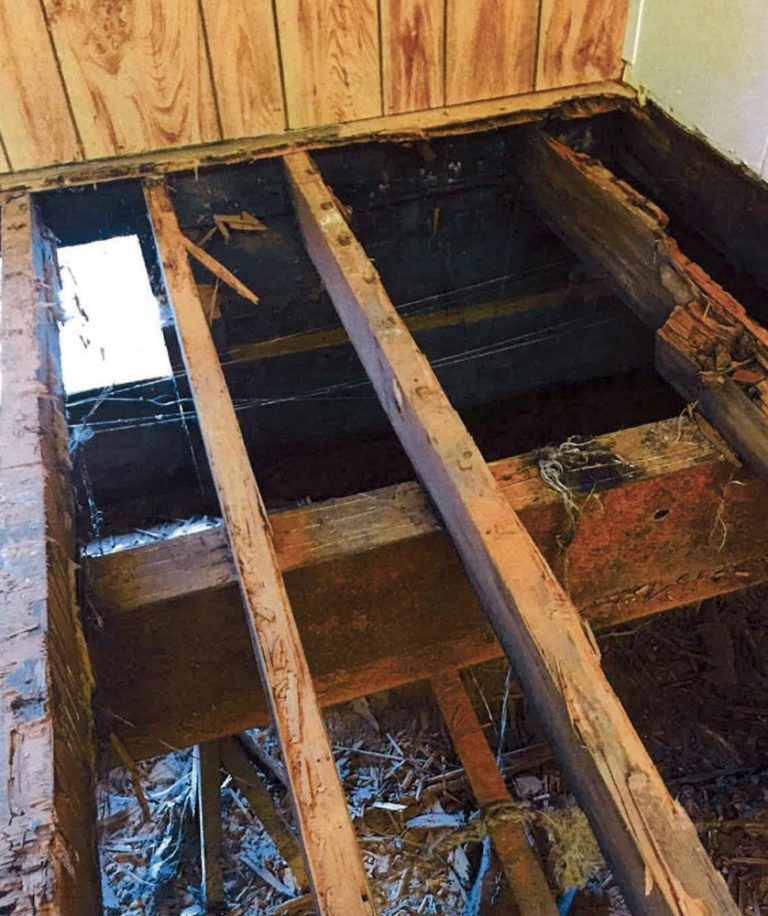
Madeleine Lee
Campus Beat Reporter
A 45-day vacate notice was issued to patrons of El Centro on Jan. 9 after University of California, Santa Barbara administrators concluded that the building is no longer safe for occupants.
A report issued by the Van Sande Structural Consultant group noted severe structural concerns, citing severe dry rot found in wood floor beams, insect infestations, and corrosion of crucial metal support beams underneath. The vacate notice, effective the same day, gives students until Feb. 22 to move decades of art and historical memorabilia out of the 30-year-old building.
Located between the UCSB Library and Broida Hall, El Centro has been a gathering space for students of color, particularly Latinx organizations, and other activist groups since the 1970s. It is widely considered a symbol of the growth and activist efforts of the Chican@ Studies Department.
At a meeting on Friday, students of Latinx and activist organizations gathered to share their concerns with administrators directly involved with the initial building investigation. Many, like fourth year El Congreso member Cecilia Fernandez, emphasized the idea that “the 45-day deadline is too soon of a notice considering how long these problems have persisted in the building.”
Campus architect Marc Fisher elaborated on the information included within the initial report issued by Van Sande Structural Consultants, detailing the structural investigation as it began with the “soft flooring” of two unused rooms of El Centro last spring.
“We did not fully realize the severity of the situation until we were able to pull those floors up and see the dry rot,” said Fisher. “There was unfortunately no indication that there was a problem before that.”
Air tests conducted in October confirmed that there is nothing that would cause an immediate health concern. Still, administrators such as Campus Building Official Ed Schmittgen, who imposed the 45-day deadline, necessitate the immediacy of the building’s evacuation due to the “severe” risk it poses to occupants in the case of an earthquake, according to seismic codes.
Initially moved to the university as a temporary building, El Centro has far exceeded the average 10-year life span of similar bungalow style buildings. However, similar issues in temporary buildings like the swim team bungalow behind the university pool have led to the building’s demolishment.
Among others, Rosie Bermudez, a UCSB graduate student and advisor to M.U.J.E.R. de UCSB, expressed frustration and distrust over the lack of administrative action taken in the past.
“Students here on this campus have been advocating to make El Centro a permanent space for a very long time, since I’ve been here,” said Bermudez, who began her academic career at UCSB in 2012. “I feel like students’ demands have been recycled for the past 20 years, if not longer. I think that the university—the way that this building has been maintained—I feel like it’s a reflection of the values this university has for this space and the people who occupy it.”
Other student activists have not yet responded for comment.
Administrators insisted that the future of El Centro is something that both administrators and the chancellor are committed to preserve.
“This was the last thing in the world that I wanted to come out of this,” said Vice Chancellor of Student Affairs Margaret Klawunn, who aided Fisher in his initial investigation of the building. “It was all really around hoping we could move in a good direction with the building, with the significance of the building, with celebrating the work and the activity that you do here.”
Though Klawunn did offer a potential space in Building 434, administrators agreed that they were not yet ready for a long-term solution.










